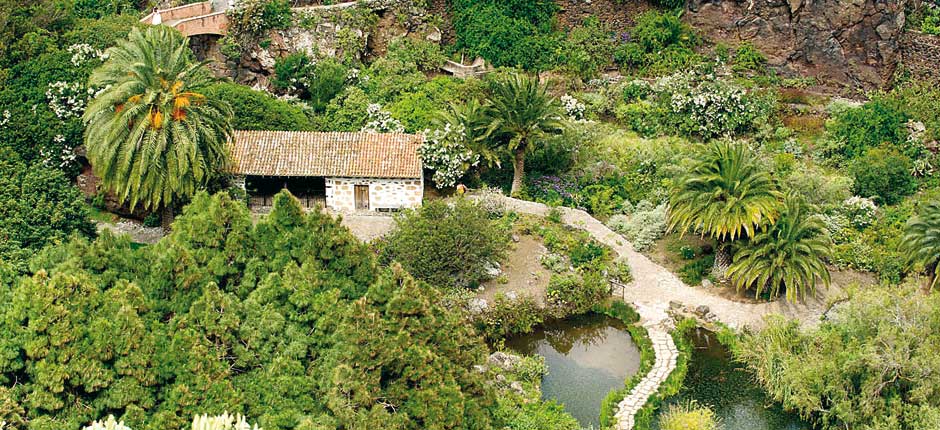Establishing this botanical garden was the life work of the Swedish-Spanish botanist Erik Ragnar Svensson (1910‚1973), who devoted many years to searching for the optimal site, one that could successfully accommodate as many as possible of the highly diverse plant species of the Canary Islands. He finally settled on a steep slope of the Barranco de Guiniguada in the vicinity of Tafira Alta, featuring a waterfall and shallow caves in the cliff face. Work on laying out the garden began in 1952, and the Jardn Botánico Canario Viera y Clavijo was officially opened in 1959. Svensson served as its first director. Following his death in a traffic accident in 1973, David Bramwell was appointed his successor in 1974.
The garden comprises approximately 27 acres (10 hectares), on which approximately 500 plant species endemic to the Canary Islands are cultivated. Important divisions are the “Garden of the Islands” (Jardn de las Islas), the “Garden of Cacti and Succulents” (Jardn de Cactus y Suculentas), where approximately 10,000 cultivars of succulents are on display, the “Macaronesian Ornamental Garden” (Jardn Macaronsico Ornamental), and the ‚Hidden Garden‚ (El Jardn Escondido) with greenhouse. Also worthy of mention are the pinetum (El Pnar) and the “Laurel-leaved Forests” (Bosque de Laurslva), featuring trees which once covered most of Macaronesia prior to Spanish settlement. At the “Fountain of the Wisemen” (La Fuente de Los Sabios), botanists who discovered and described the flora of the Canary Islands are honored.
In 1983, the garden established a seed bank for the roughly 400 tree species endemic to the Canaries and other Macaronesian islands. A germplasm bank was subsequently established as well. A great number of species have been identified and described by botanists associated with the garden over the past several years, and the garden contributes to species preservation programs through its research work. Its facilities include a library, a herbarium, and laboratories, and it publishes the journal Botánica Macaronsica.







